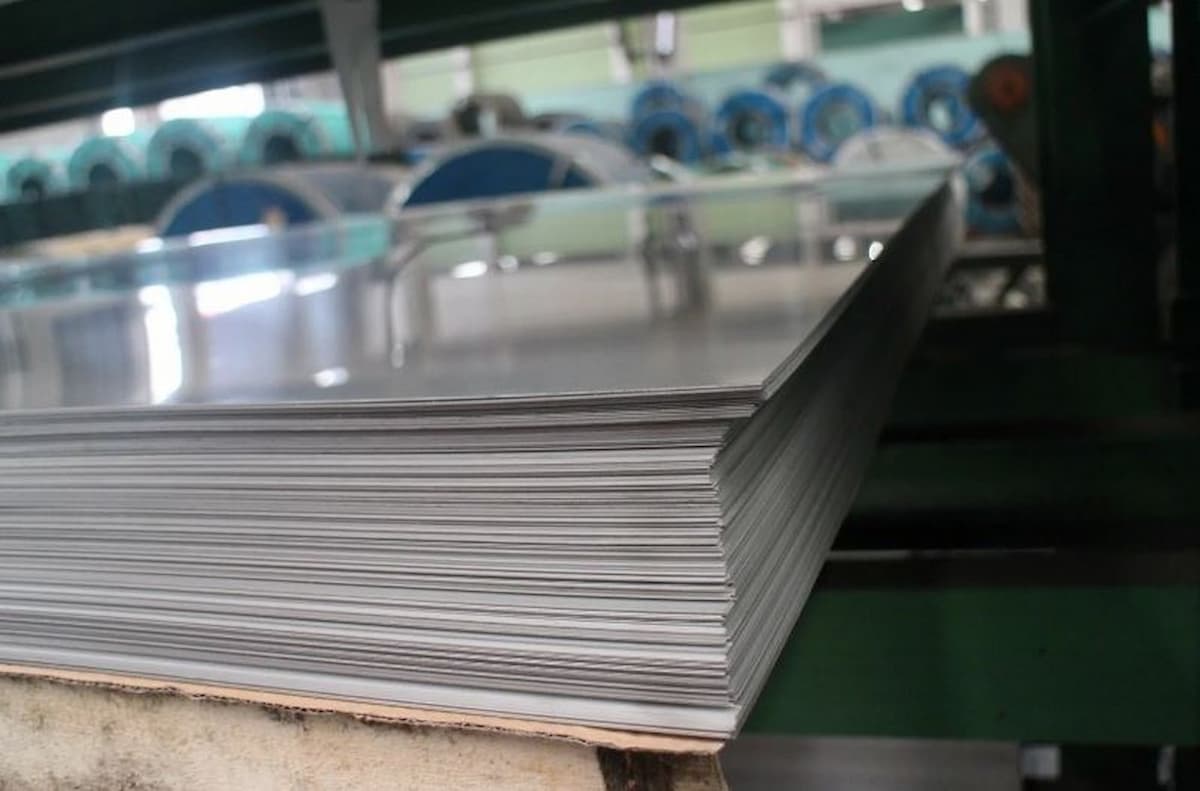Zinc coating applied on galvanized steel sheets, gives them their most important feature: corrosion resistance.
The “Zinc” element, which is organic, free-flowing and accessible, was the first element in the building in 79 AD.
Zinc metal has a variety of characteristics that make it a suitable corrosion protection coating for iron and steel materials. Because of the exceptional corrosion resistance in many environments, this material has been successfully used as a protective cover on a wide range of objects and in different circumstances of exposure to corrosion.
Zinc has been shown to be able to cause a congested corrosion and continuously resist corrosion in some parts of the world.
This in turn leads to corrosion, which is significantly less than iron material — anywhere from ten to a hundred times slower, depending on the environment.

The corrosion products on the surface formed by coating are rapidly placed under the natural wet and dry cyclones that are carried out in the atmosphere.
A recently covered zinc surface is highly exposed to the atmosphere. These corrosion products, collectively known as Patna Roy, work to create an additional barrier between steel and surrounding environments.
The application of zinc coatings on steel can be done by using any of the commercially available processes, each with its own set of qualities.
Although it is common to determine all these coatings as galvanized, it is essential to be aware of the difference between them.
Products created as a result of each of these processes can be supplied with different purposes, depending on the executability, relative economic viability and the service life expected.
After it has been found that zinc coating is used to prevent corrosion, there are few considerations that should be paid attention to be selected to provide suitable coating for the application and environment in which it will be used.
Identification of the environment corrosion in exposure to radiation is very important in order to determine whether the zinc coating is selected.

Each zinc coating covered in this section provides different degrees of protection against corrosion.
Some zinc coatings are rejected due to their inherent characteristics, for example, coating processes that are only applicable to small parts or sheet steel can not be considered as the protective cover of structural steel members. Other zinc coatings can be ruled out due to factors such as cost, appearance, availability, and so on.
The thickness of zinc coating is directly proportional to the amount of zinc coating on it.
Comparing many of the processes that may be used to apply zinc can only be misleading, depending on the thickness of the zinc coating. In addition to its thickness, the density to the amount of “zinc” available in the volume unit is also an important factor.
It is essential to convert all coatings into a common denominator so that they can be compared, as different ASTM and/or other specifications require different weights or thicknesses. Density of coatings, including zinc coatings, is very similar to each other, while the density of other types of zinc coatings is very different.
Each of these thicknesses, which show the same weight of each unit of the area of the face, is expected to provide equivalent service life span; For example, 1.7 mg hot-dip galvanized offers nearly the same longevity as 2.2 ml mechanical plating or 3-6 ml (depending on the color formula) of zinc-rich paint.
This is based on the assumption that the bonding strength and edge protection are not factors in this comparison.
It is necessary to remember that the weight of the coating, which refers to each and all the material of continuous galvanized sheet, including electrogalvanized, refers to the total weight of the coating applied to both sides of the sheet.
If we assume that zinc is equally distributed on both sides of the surface, we can split the weight given in half to receive the amount of zinc present in each unit of the surface.
As an image, a ASTM A۶۵۳ G۹۰ class sheet has 0.90 oz/ft۲ of zinc, which breaks to about 0.45 oz/ft۲ for each side.

galvanized steel sheet zinc
The use of reliable and high quality materials is essential for the performance of modern building industry. It contains steel sheets that are specifically added for protection. This is galvanized steel sheet, as you may have guessed from the previous description.
Galvanized steel is a kind of rolled metal products or common steel sheet coated with a protective layer on top.
This layer prevents moisture from penetrating steel and protects it from exposure to the air and sunlight. A shielding of this type may be applied to one side of the steel plate or both sides of the sheet. Changing the thickness of the protective cover is not only possible according to the greater area of application of galvanized steel sheet, but also according to the predicted moisture content in the surrounding environment.
Galvanizing is the method of galvanizing the zinc placement technique on a metal surface using an electrolyte solution. Other galvanized methods include:
Galvanizing is the process of covering a metal (often iron or steel) with a layer of zinc by digestion of the product in a bathroom containing molten zinc at about 460 degrees Celsius. This process is known as high-temperature galvanization.
Low-temperature galvanization involves coating a metal surface with a special composition that contains zinc powder. This creates a protection from corrosion.
Squaring is a method of galvanizing that uses zinc powder (processing at high temperatures between 300 and 450 °C) or zinc vapor (at 800 to 900 °C).
Zinc spray method is a zinc coating technique using a specially designed ball for technical purposes.
The use of zinc coating by supersonic jet flow is known as gas-dynamic galvanized.



